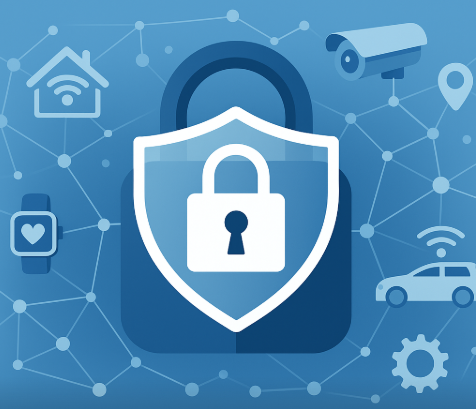
IoT Cybersecurity: Protecting the Future of Connected Devices
The Internet of Things (IoT) is revolutionizing the way we live and work. From smart homes and wearable fitness trackers to industrial sensors and connected vehicles, IoT devices are becoming essential components of our digital ecosystem. But with this rapid growth comes a critical challenge: cybersecurity.
As billions of devices connect to the internet, the risk of cyber threats grows exponentially. IoT cybersecurity is no longer a luxury—it’s a necessity. Here’s what you need to know about securing your connected world.
What Is IoT Cybersecurity?
IoT cybersecurity refers to the strategies, technologies, and practices designed to protect connected devices and the networks they operate on from cyber threats. Unlike traditional IT systems, IoT environments often involve low-power devices with limited processing power, making them more vulnerable to attacks and harder to secure.
Why Are IoT Devices Vulnerable?
Many IoT devices are built with convenience and affordability in mind, not security. Common vulnerabilities include:
- Default or weak passwords
- Lack of encryption
- Outdated firmware
- Unpatched software vulnerabilities
- Insecure communication protocols
Because IoT devices often operate autonomously and continuously, a single vulnerable device can provide hackers with a backdoor into an entire network.
Common IoT Cyber Threats
As IoT ecosystems expand, they face a range of cyber risks:
- Botnet attacks: Hackers hijack IoT devices to form large botnets used in Distributed Denial-of-Service (DDoS) attacks.
- Data breaches: Sensitive data collected by IoT devices (such as location or health information) can be intercepted and exploited.
- Device hijacking: Cybercriminals take control of a device to disrupt operations or demand ransom.
- Man-in-the-Middle (MITM) attacks: Intercepting and altering communications between IoT devices and their controllers.
Best Practices for IoT Cybersecurity
To protect IoT systems from cyber threats, businesses and consumers should adopt a layered, proactive security approach:
- Use Strong Authentication
Always change default usernames and passwords. Implement multi-factor authentication (MFA) where possible.
- Keep Devices Updated
Ensure firmware and software updates are installed promptly to fix known vulnerabilities.
- Segment the Network
Separate IoT devices from core business or personal networks to limit access in case of compromise.
- Encrypt Data in Transit
Use secure communication protocols (such as TLS/SSL) to prevent data interception.
- Monitor and Audit Devices
Regularly review connected devices, monitor activity, and disable unused devices or services.
Enterprise-Level IoT Security
For organizations using IoT in manufacturing, logistics, healthcare, or smart cities, security becomes even more critical. Enterprises should implement:
- Endpoint detection and response (EDR) for IoT
- Security Information and Event Management (SIEM) systems to track anomalies
- Zero Trust Architecture to ensure every device is verified before access is granted
- Compliance frameworks such as NIST IoT or ISO/IEC 27001 for industry-specific regulations
The Future of IoT Cybersecurity
As 5G adoption expands and more devices come online, the need for built-in security—not just add-ons—will grow. Manufacturers, developers, and regulators must work together to set cybersecurity standards for IoT. Artificial Intelligence (AI) and machine learning will also play a role in automating threat detection and response for large IoT networks.
Final Thoughts
The IoT boom is transforming industries and lifestyles—but also widening the attack surface for cybercriminals. Proactive, holistic IoT cybersecurity is the only way to ensure safety, privacy, and performance in an increasingly connected world. Whether you’re managing a fleet of smart devices at home or deploying sensors in an industrial environment, security must be part of your foundation—not an afterthought.
